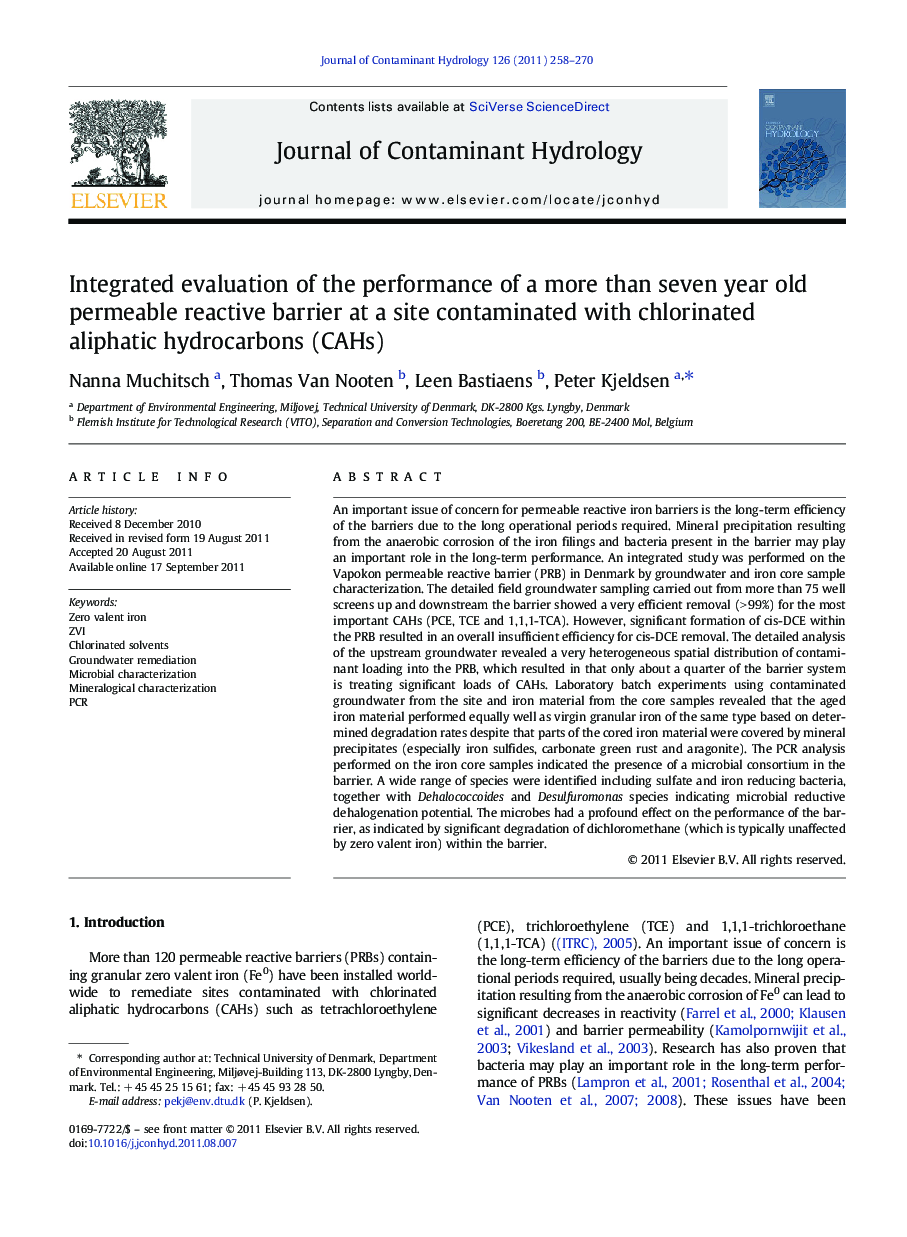| کد مقاله | کد نشریه | سال انتشار | مقاله انگلیسی | نسخه تمام متن |
|---|---|---|---|---|
| 4546936 | 1627074 | 2011 | 13 صفحه PDF | دانلود رایگان |

An important issue of concern for permeable reactive iron barriers is the long-term efficiency of the barriers due to the long operational periods required. Mineral precipitation resulting from the anaerobic corrosion of the iron filings and bacteria present in the barrier may play an important role in the long-term performance. An integrated study was performed on the Vapokon permeable reactive barrier (PRB) in Denmark by groundwater and iron core sample characterization. The detailed field groundwater sampling carried out from more than 75 well screens up and downstream the barrier showed a very efficient removal (> 99%) for the most important CAHs (PCE, TCE and 1,1,1-TCA). However, significant formation of cis-DCE within the PRB resulted in an overall insufficient efficiency for cis-DCE removal. The detailed analysis of the upstream groundwater revealed a very heterogeneous spatial distribution of contaminant loading into the PRB, which resulted in that only about a quarter of the barrier system is treating significant loads of CAHs. Laboratory batch experiments using contaminated groundwater from the site and iron material from the core samples revealed that the aged iron material performed equally well as virgin granular iron of the same type based on determined degradation rates despite that parts of the cored iron material were covered by mineral precipitates (especially iron sulfides, carbonate green rust and aragonite). The PCR analysis performed on the iron core samples indicated the presence of a microbial consortium in the barrier. A wide range of species were identified including sulfate and iron reducing bacteria, together with Dehalococcoides and Desulfuromonas species indicating microbial reductive dehalogenation potential. The microbes had a profound effect on the performance of the barrier, as indicated by significant degradation of dichloromethane (which is typically unaffected by zero valent iron) within the barrier.
► A more than seven year old PRB still efficiently removes chlorinated solvents.
► The PRB is colonized by several microbial species.
► Microbial activity affect the transformation processes.
► The iron material is active in transforming chlorinated solvents — although containing precipitates.
Journal: Journal of Contaminant Hydrology - Volume 126, Issues 3–4, 1 November 2011, Pages 258–270